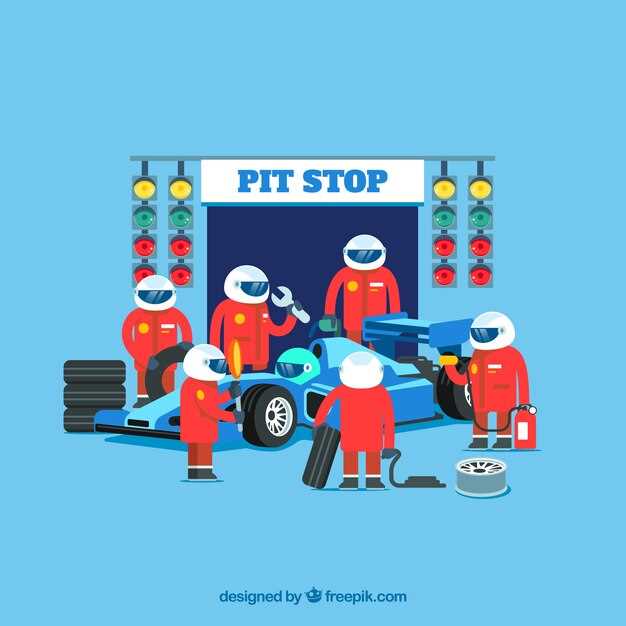
What’s the Ideal Suspension Setup for Autocross?
- George Harris
- 0
- Posted on

Autocross racing is a thrilling motorsport that tests both the driver’s skill and the vehicle’s handling capabilities. One of the most critical aspects that can significantly impact performance is the suspension setup. A well-tuned suspension not only enhances traction and cornering ability but also improves overall stability and driver confidence on the course.
Understanding the dynamics of your vehicle and how different suspension components interact is essential for achieving optimal performance. This article delves into key tips and strategies for configuring your suspension to meet the unique demands of autocross racing. From adjusting ride height and spring rates to fine-tuning dampers, we will explore various methods that can lead to a competitive edge.
Moreover, we will highlight the importance of testing and data collection during practice runs. Each autocross event presents distinct challenges, and a rigid setup may not always yield the best results. By remaining adaptable and responsive to track conditions, you can optimize your vehicle’s suspension to maximize grip and minimize lap times.
Choosing the Right Springs for Improved Cornering
When it comes to enhancing cornering performance in autocross racing, the selection of springs plays a crucial role. Springs are responsible for supporting the vehicle’s weight and determining its handling characteristics, making them a vital component in the suspension setup.
The first step in choosing the right springs is to understand the stiffness, or spring rate, which is measured in pounds per inch (lb/in). A higher spring rate offers increased stiffness, resulting in less body roll during cornering. This translates to better stability and quicker response when navigating tight turns. However, excessively stiff springs can lead to a harsh ride and reduced grip over uneven surfaces.
It’s essential to balance spring stiffness with the vehicle’s overall weight distribution and intended use. For heavy vehicles or those with a front-heavy weight bias, softer springs may be beneficial to maintain traction on the rear wheels during cornering. Conversely, lighter vehicles can typically accommodate stiffer springs without compromising performance.
Another key factor is the spring length. Choosing a spring that fits properly within the suspension geometry is critical. Incorrect length can lead to poor handling and potential damage to the suspension components. Adjustable coilovers are a popular choice among competitors, allowing for fine-tuning of both spring rate and ride height.
Additionally, consider the type of driving surface and conditions. Soft compounds may be more effective on smooth surfaces, while stiffer springs can perform better on rougher terrains. Testing different setups at practice events can provide valuable insights into optimal configurations based on specific course layouts.
Finally, don’t overlook preload settings, which can affect ride height and suspension travel. Adjusting preload can help achieve the desired weight distribution and improve overall balance during cornering maneuvers.
In conclusion, selecting the right springs involves assessing your vehicle’s weight, handling characteristics, and the specific demands of autocross racing. A well-thought-out spring choice will enhance cornering performance, providing better grip and control through tight turns. Test various configurations to determine which setup best fits your driving style and the characteristics of your vehicle.
Adjusting Dampers for Ideal Weight Transfer

In autocross racing, optimizing weight transfer is crucial for maximizing grip and improving lap times. Adjusting dampers, which are responsible for controlling the compression and rebound of your suspension, plays a vital role in achieving this balance. The key is to set your dampers in a way that promotes effective weight transfer during acceleration, braking, and cornering.
To begin, it’s essential to understand the relationship between damper settings and vehicle dynamics. Softer dampers allow for quicker weight transfer, which can be beneficial during quick directional changes. However, excessive softness may lead to body roll and reduced stability. Conversely, stiffer dampers provide better control but can hinder the vehicle’s ability to transfer weight efficiently, particularly during cornering.
When fine-tuning dampers, start by adjusting the compression settings. A good approach is to soften the compression on the front dampers slightly to allow the front tires to better absorb initial impact and gain traction during braking. This will enable the car to pivot more effectively, enhancing responsiveness in tight turns.
Next, focus on the rebound settings of the dampers. Balancing rebound stiffness is critical for preventing excessive body movement after weight transfer occurs. Too much rebound can cause a delay in the return of the suspension to its neutral position, impacting stability and grip. Aim for a setting that allows the suspension to recover quickly without being overly harsh.
It’s recommended to make incremental adjustments and test each configuration during practice runs. Monitor how changes affect the vehicle’s behavior, particularly in terms of grip levels and response times. Keep in mind that different surfaces may require distinct damper settings; therefore, being adaptable is key to achieving optimal performance.
Additionally, consider the overall weight distribution of your vehicle when adjusting dampers. If your vehicle has a front-heavy balance, you might benefit from stiffer rear dampers to promote a more even weight transfer, reducing understeer. Conversely, if the car is rear-heavy, softer rear dampers can help maintain front-end grip.
Ultimately, adjusting dampers for ideal weight transfer requires a blend of theory and practical testing. By carefully tuning your setup and understanding the dynamics at play, you can significantly enhance your autocross performance.
Setting Tire Pressure to Maximize Grip

Tire pressure plays a critical role in the performance of your vehicle during autocross racing. Properly setting your tire pressure can significantly enhance grip, stability, and overall handling. The goal is to achieve an optimal balance where the tires can flex appropriately without compromising their contact patch with the asphalt.
The first step in determining the ideal tire pressure is to consult the manufacturer’s recommendations, which can generally be found on the tire sidewall or the vehicle’s door jamb. However, these values are often geared towards general use rather than competitive racing. For autocross events, you may need to adjust these pressures based on specific conditions and setups.
A common starting point for performance-oriented tires is between 30-35 psi, but this can vary widely depending on factors such as tire compound, weather conditions, and track layout. Lower pressures can increase the contact patch and thus enhance grip, but going too low can lead to tire roll and increased wear. Conversely, higher pressures reduce the flexing of the sidewalls, which can improve feedback and responsiveness but might sacrifice grip.
During your practice runs, monitor the tire temperatures across the tread. An ideal situation would show even temperatures across the inner, middle, and outer sections of the tire. Hotter sections indicate under-inflation, while cooler areas may suggest over-inflation. Adjust your tire pressure in small increments of 1-2 psi based on these observations. This iterative process will help you identify the optimal settings for both grip and durability.
Additionally, keep in mind that tire pressure should be adjusted according to weather conditions. On hot days, the air inside the tire expands, leading to higher pressure, while colder conditions can have the opposite effect. Performing pre-run checks will ensure that your settings remain consistent throughout the event.
Finally, taking notes of your tire pressures, changes made during runs, and resulting performance will enable you to refine your approach over time. This data-driven strategy is essential for achieving and maintaining the best grip possible throughout your autocross experience.
